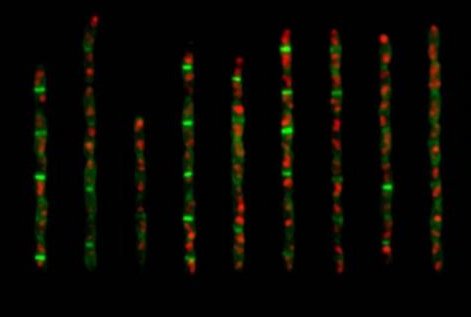When cellular DNA expresses enough essential proteins to meet a critical threshold, a process called the adder principle is triggered, allowing cells to grow to a consistent size before beginning cell division. Photo by Jun Lab / UC San Diego
May 17 (UPI) -- New research has revealed the mechanism cells use to control their growth and maintain their size, a phenomenon known as "cell size homeostasis."
"Cell size homeostasis is a fundamental biological question and to our knowledge this is the first time we finally understand its mechanistic origin," Suckjoon Jun, a biophysicist at the University of California, San Diego, said in a news release.
Jun and his colleagues previously showed that cell size is controlled by something called the "adder principle." The researchers showed cells grow by a fixed added size, irrespective of their birth size.
The adder principle proved cells don't control growth through a sense time and space, but it failed to explain the exact mechanisms that allows for size homeostasis.
The latest research -- published this week in the journal Current Biology -- showed cell size homeostasis is made possible through two main components: the balanced synthesis of essential biological ingredients, proteins necessary for cell division, and a critical threshold that triggers the adder process once all the ingredients have been assembled.
The two components make the adder principle possible.
"It's a very robust mechanism because each cell is guaranteed to reach its target cell size whether it is born large or small," said Jun. "The bottom line is that we found the adder is exclusively determined by some key proteins involved in cell division."
Jun and his colleagues observed the mechanisms in a pair of bacteria species, Escherichia coli and Bacillus subtilis, but estimate the same components ensure cell size homeostasis in all living organisms.
Researchers credited the power of interdisciplinary collaboration with their breakthrough discovery.
"We would not have been able to solve this with pure physics or pure biology. It was a very multidisciplinary approach," Jun said.















